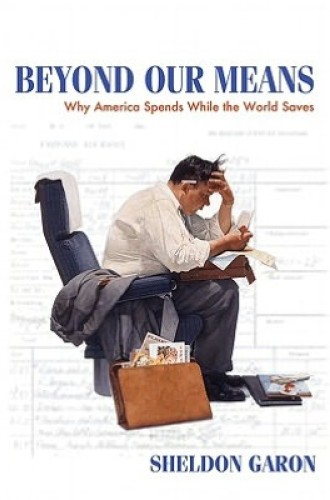Beyond Our Means, by Sheldon Garon
People in nations with substantial social welfare provisions save more than Americans, who lack some of those provisions and therefore should be saving more to cover unpredictable expenses. European households keep saving through retirement, but Americans dissipate their wealth in retirement. Rapid economic growth does not lead to higher savings by individuals in the United States, whereas in Europe even slow growth results in significant savings rates. Why?
Sheldon Garon contends that Americans lack moral teaching related to wealth, public policies that encourage saving, and a cultural ethos that nurtures practices of thrift. To realize success, Americans instead rely on high consumption, borrowing and visions of the steady high growth of wealth.
Read our latest issue or browse back issues.
Garon explains that in the 19th century numerous advocates of frugality preached that saving was a virtue that would result in social solidarity, instead of the uprisings that could be inspired by poverty-stricken citizens who had not saved. Patriotism and saving became linked, and the connection was bolstered by the claim that even small savings could help the working class secure a better bargaining position in labor relations. In their role as frugal household managers and teachers of children, women helped perpetuate a savings mentality. But these factors were more evident in Europe, where a communal vision, rather than individualism, has been a key virtue.
After laying this groundwork, Garon explores savings instruments in various countries. The most common savings instrument of the masses was the post office savings bank. Extensive data on postal banks in Europe, Japan and the United States show how commoners would save if given a safe, flexible and convenient way of doing so. In the United States savings characteristics differed considerably from those of Europe and Japan. In 1909 only one-tenth of the population had a savings account, while other countries generally had triple that proportion. In general, European savings efforts were designed to encourage family security, while American savings seemed to focus more on funding the federal government. Japan’s government and the Japanese population were eager to help foster savings on a wide scale; they employed strategies similar to those used in Europe, as well as savings plans specific to Japanese culture.
World Wars I and II had a big influence on savings. During World War I, buying savings bonds to help finance the war became the patriotic thing to do. However, in the United States, compared to Europe, bonds were more likely to be purchased by the rich minority than by the masses, and the coercive nature of the war bond promotions did not institutionalize savings as a virtue. During World War II, however, the United States adopted European-style fund-raising drives, and higher taxes curtailed consumption substantially. At one point the savings rate in the United States approached 26 percent, mostly in support of the war.
But after the war, Americans, unlike Europeans, used their savings to buy the consumer goods they’d forgone during the war, and the savings momentum disappeared. After the war the Japanese saving mentality was tested by slow growth that eventually led to low savings rates out of necessity.
After looking at savings and growth rates in other Asian countries, Garon concludes that saving is not mainly determined by culture, religion or philosophy, but rather by the existence of institutional arrangements and strategies that promote household savings. He closes with suggestions to promote more household savings: we should improve small savers’ access to banks, and the federal government should universalize such access. We should encourage saving through tax policies, and we should institute youth savings programs. Garon contends that all of this will make savings a social project and make household thrift important for group identity.
Beyond Our Means is a massive collection of well-documented information, but it is repetitive at points, and its narrow focus on household savings misses some essential macroeconomic implications. The important question to ask is whether the resources available to society are being put to their best use. Savings and credit are merely means of allocating resources. When households accumulate debt that is funded by business savings, more resources flow into personal consumption. Government bondholders transfer their own resources to the public sector. Household savings that accumulate as corporate bonds or bank savings help resources flow to the business sector. If there are no household, business or government savings, then each sector will need to fund itself with wages, with profits or with taxes and money creation, respectively.
The main issue is whether a particular form of saving is causing resources to flow in a desirable direction at an appropriate rate. This question, which Garon does not directly address, requires moral reflection. A debt-ridden consumer society that thrives on short-run pleasure threatens economic well-being and is not likely to be sustainable. Garon clearly believes that the United States is in such a situation, but he does not flesh out that claim in moral terms.
He could have made more of the fact that the higher household savings rates of countries other than the U.S. often cause resources to flow from those countries to Americans, who already have more than most people in the world. Garon also does not discuss the lack of government saving or central banks’ creation of money to fund debt.
Nevertheless, Garon does uncover some important insights into how we look at household financial planning, and his book’s rich historical orientation provides a valuable background for those who are seeking to evaluate the savings issue from a moral perspective. America’s Economic Moralists, by Donald Frey, would be a good complementary source to add perspectives on this important issue in economic life.






